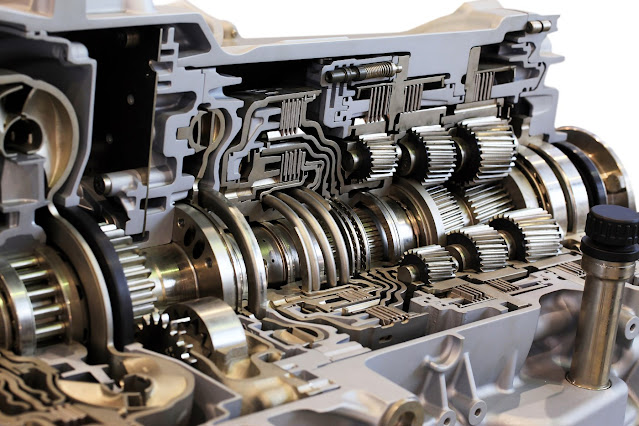The Role of Transmission Control Modules in Automotive Transmission Systems
 |
| Automotive Transmission Systems |
In modern automotive transmission systems, the transmission control module (TCM) plays a vital role in managing the operation and functionality of the transmission. The TCM serves as the brain behind the transmission system, using advanced electronics and software to monitor, control, and optimize its performance.
One of the primary functions of the
TCM is to receive input signals from various sensors located throughout the
vehicle. These sensors provide critical data such as vehicle speed, engine
speed, throttle position, gear selection, and more. The TCM processes this information
to determine the optimal gear shifts, taking into account factors such as
engine load, road conditions, and driver behavior.
Based on the input signals and
programmed algorithms, the TCM controls the shifting of gears within the
transmission. It engages the appropriate solenoids or actuators to activate
clutches, bands, and valves, ensuring smooth and precise gear changes. By
continuously monitoring and adjusting the shifting parameters, the TCM
optimizes the transmission's performance for factors such as fuel efficiency,
power delivery, and overall driving comfort.
According to Coherent Market Insights the Automotive
Transmission Systems Market Size, Share, Outlook, and Opportunity
Analysis, 2022-2028.
The TCM also plays a crucial role in
the safety and protection of the transmission system. It constantly monitors
the transmission for any abnormalities or malfunctions, such as slipping,
overheating, or excessive wear. In the event of a detected issue, the TCM can
trigger warning indicators on the dashboard, engage failsafe modes, or even
limit engine power to prevent further damage.
Moreover, the TCM enables the
integration of advanced transmission features and functionalities. It allows
for the implementation of adaptive shifting algorithms, which adapt gear shifts
based on driving conditions and driver behavior. This improves the
transmission's responsiveness and efficiency.
Additionally, the TCM facilitates the
integration of other vehicle systems. It can communicate with the engine
control module (ECM), allowing coordinated control of the transmission and
engine for optimal performance. This coordination ensures smooth power delivery
during gear shifts and enables features like rev-matching during downshifts.
Furthermore, the TCM contributes to
the diagnostics and troubleshooting of the transmission system. It stores and
retrieves fault codes, providing valuable information to technicians for
diagnosing and repairing transmission-related issues. This helps in reducing
diagnosis time and improving the efficiency of repairs.
As automotive technology continues to
advance, transmission control modules are becoming increasingly sophisticated.
They are incorporating more advanced algorithms, adaptive learning
capabilities, and connectivity features to enhance performance and integrate
with other vehicle systems seamlessly.
The transmission control module is a
critical component of modern automotive transmission systems. It serves as the
central control unit, overseeing the shifting of gears, optimizing performance,
and ensuring the safety and protection of the transmission. With its advanced
electronics and software, the TCM plays a pivotal role in enhancing driving
experiences, improving fuel efficiency, and enabling the integration of various
transmission features and functionalities.



Comments
Post a Comment